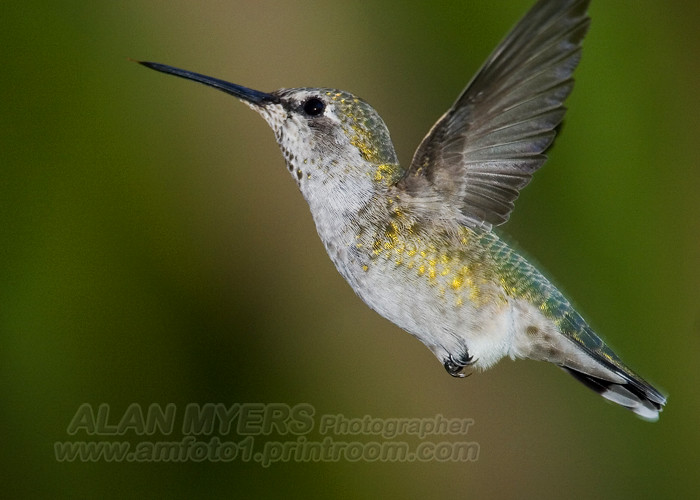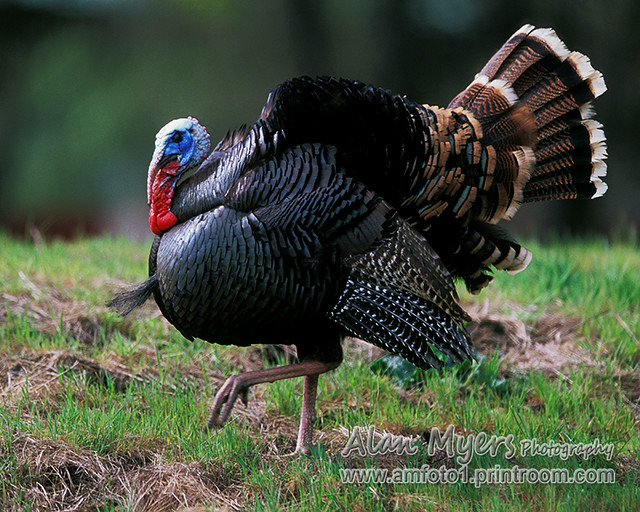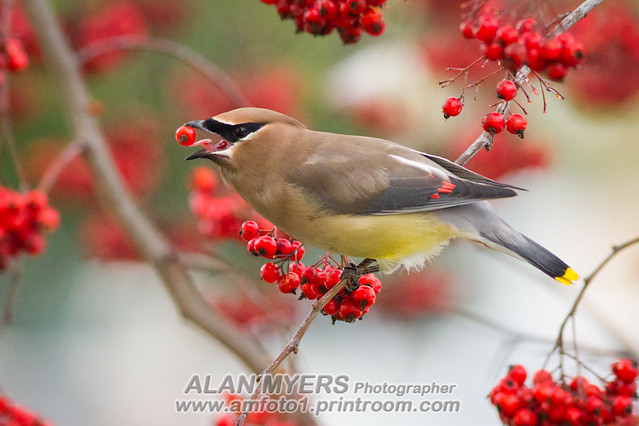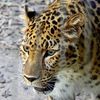Sample photo of my previous focus problem post
Apr 9, 2019 10:53:03 #
SuperFly48
Loc: NE ILLINOIS
I have a Tamron 18-270 lens myself; had it on my D7100 for a while. I was satisfied at first, then discovered the lens was soft when my shots were enlarged a bunch; that was disappointing even for landscape work. I put that lens on my D80 body and left it there; put my 18-200 Nikon DX VR back on the D7100 and was satisfied until its focus lock died last October. Now I use only Nikon FX lens and old Nikkor manual primes. Had a Tamron 24-70 G2; returned it to B & H because the old primes were as good if not better than the G2. Had a Tamron 150-600 first generation; maybe 40% of the shots were sharp enough to consider printing; sold off that lens. No more Tamron for me.
Apr 9, 2019 10:57:16 #
For what it is worth. I shoot wildlife frequently and currently use a Nikkor 80-400mm telephoto lens coupled with a D850 camera body. Usually, I shoot at 400mm, especially for BIF. My shots taken at 400mm and 100 yards will not produce the quality image you are seeking. The smaller the subject, the worse it gets. There just aren't enough pixels in the small sensor patch encompassed by a small bird at 100 yards to create sharp edges and any focus or movement issues will be magnified exacerbating the problem. Among other shooting techniques, I sometimes use the focus point tracking square in the viewfinder as a distance reference. If the bird just fills the square, I do not shoot. I must perceive the subject be approximately 4-5 times larger than the tracking square to pull the trigger and closer is better. Note: It doesn't cost anything to shoot too far out other than disappointment with your results. With your 270mm, I suggest getting inside 50 yards and 15 would be better. One painful way to get closer is to buy more expensive lenses and/or camera bodies, but in my opinion, the preferred solution is to learn more about animal behavior and somehow find a way to get closer to the critters with your existing equipment.
Apr 9, 2019 11:13:16 #
RRS
Loc: Not sure
Bill_de wrote:
With long lenses shooting birds in flight we need fast shutter speeds. That leads to large apertures leaving a very shallow depth of field. You do need to focus on the bird, preferably on the eye. If you happen to focus un the wing tip the eye is likely to be out of focus.
---

With long lenses shooting birds in flight we need fast shutter speeds. That leads to large apertures leaving a very shallow depth of field. You do need to focus on the bird, preferably on the eye. If you happen to focus un the wing tip the eye is likely to be out of focus.
---
I have to laugh every time I read this, " You need to focus on the eye of the bird". I thought, you have to be kidding me, right? When I first started I couldn't even keep my focus on the bird let alone it's eye unless it was sitting still. Thing got better until I got some long lenses and then really went down hill. It was like trying to find and then follow a fast flying bird while looking through a straw. I approach this theory a lot differently today. So much depends on how far out the flying bird is, how fast, how large or small and the DOF that my setup gives me. When shooting a 600mm F/4.0 at F/6.3 to F/8.0 from about 100' out I have more then enough DOF to cover the entire bird in full focus. I'm still working on the eye thing but I can almost always at least keep my focus on the birds head.

Apr 9, 2019 11:31:46 #
gvarner
Loc: Central Oregon Coast
RRS wrote:
I have to laugh every time I read this, " You... (show quote)
Yep, DOF is our friend. Also, a tracking mode like Nikon's AF-C is handy combined with back button focus.
Apr 9, 2019 12:14:07 #
RRS
Loc: Not sure
gvarner wrote:
Yep, DOF is our friend. Also, a tracking mode like Nikon's AF-C is handy combined with back button focus.
I use BBF with two buttons, one setup for One Shot spot focus and the other for AI Servo with expanded 4 spot.
Apr 9, 2019 12:44:47 #
The shutter speed, ISO and aperture settings are fine. The focusing method is not. I would use auto focus, NOT manual, spot focusing and put the active focus dot in the viewfinder on the subject. If the camera has predictive focus, that would be good, too.
Apr 9, 2019 13:06:01 #
Fergie wrote:
My initial question was if my Nikon D3100 with a Tamron 18-270 would do a good job for a crisp photo at 100 yards. I also need to learn how to understand camera settings.
Thank You!
Thank You!
----------
In the Exif data, it says you were using manual focus. I would recommend that you switch to Auto-Focus first and possibly try a slightly smaller aperture too such as f/8. If you are using a tripod and still having problems try turning off the VC while using the tripod.
Apr 9, 2019 13:26:59 #
Bill_de wrote:
With long lenses shooting birds in flight we need fast shutter speeds. That leads to large apertures leaving a very shallow depth of field. You do need to focus on the bird, preferably on the eye. If you happen to focus un the wing tip the eye is likely to be out of focus.
---

With long lenses shooting birds in flight we need fast shutter speeds. That leads to large apertures leaving a very shallow depth of field. You do need to focus on the bird, preferably on the eye. If you happen to focus un the wing tip the eye is likely to be out of focus.
---
The tiny depth of field you are describing (wing vs. eye) is not a factor at the distances he's shooting at, which are obviously too far away and/or with too short a lens. When he gets to the point where a bird is close to filling the frame, that will be a concern.The OP has much bigger focusing problems. >Alan
Apr 9, 2019 13:36:11 #
RRS
Loc: Not sure
aellman wrote:
The tiny depth of field you are describing (wing vs. eye) is not a factor at the distances he's shooting at, which are obviously too far away and/or with too short a lens. When he gets to the point where a bird is close to filling the frame, that will be a concern.The OP has much bigger focusing problems. >Alan
Oh so true!
Apr 9, 2019 13:48:22 #
Switch off VC - at the speeds you need for BIF it will make no difference. If you have focus tracking switch it on - if not, then you need pin-point focus. Switch on burst and track the subject yourself - with centre of frame. keep tracking until burst finishes. With luck you will get at least one good'n.
Apr 9, 2019 14:07:29 #
All previous suggestions are good; however, after taking these suggestions, you can still improve your BF pictures using a small red dot gunsight. This sight sets above the camera and allows you to keep both eyes open and establish the bird faster. The sight also allows you to use both eyes when searching the sky. After mounting the sight on your camera, correcting the parallax between the two at 60 yards and you're ready to go. These are available on Amazon for less than $30.00 and a proper rail with hot shoe attachment is less than $10.
Apr 9, 2019 14:46:58 #
sirlensalot
Loc: Arizona
Looks like camera shake also a culprit. BIF demands faster shutter speeds. Consider a tripod or monopod and turn of the VC as an experiment. Suggest center point only for AF and AF tracking. I am not a BIF shooter, but you may want to try back button focusing.
Apr 9, 2019 16:06:23 #
amfoto1
Loc: San Jose, Calif. USA
Shutter speed is 1/2000! Camera shake or subject movement blur is extremely unlikely the cause of any problems. Having VC turned on probably didn't help... but also probably didn't hurt, either. An f/7.1 aperture also was more than sufficient (stopping down to f/11 would do more harm than good... too small aperture causes diffraction... f/7.1 is probably just about optimal).
There are several things.... and possibly one or two more... causing this image to be so bad.
1. Subject is too far away for 270mm focal length. Either limit your shooting to closer subjects or get a longer focal length lens.
2. It appears you had the lens' autofocus turned off? Why? AF, done right, is faster an more accurate than you ever will be.
3. Subject is way off-center in the image area... was it even covered by an AF point?
Some other possibilities...
I don't have a Tamron 18-270mm so don't know for sure... but those "do it all" zooms usually don't do anything particularly well. They are usually don't have all that great image quality at their maximum zoom and are slow focusing. With fast moving subjects, you need fast focusing in order to track them and maintain focus. A more premium, longer focal length like the Nikkor AF-S 80-400mm VR or the Nikkor AF-S 200-500mm f/5.6 VR would be much sharper and much better tracking fast moving subjects. Of course, these are also a much more expensive lenses. Still more expensive than the 18-270mm, but less expensive and less high performance than those Nikkors, an approx. $700 Tamron or Sigma 100-400mm would no doubt be an improvement (the Tamron has option to use with a tripod mounting ring, sold separately... the Sigma doesn't offer that option).
Finally, do you have a "protection" filter on that lens? If so, take it off and try without it. Filters can cause softer images or even effect focus accuracy. It's better to use no filter at all unless it's serving a "real" purpose (such as a circular polarizer), but any filter needs to be high quality, multi-coated to minimize any degradation to images (some always occurs, but may be very little with a high quality filter such as a B+W XS-Pro or F-Pro).
Study your camera's AF system and learn to use it. For birds in flight, which are a difficult subject, you MUST use a continuous form of focus (Nikon AF-C, not AF-S.... Canon AI Servo, not One Shot). For fast moving subjects, you may need to use multiple AF points, but doing so increases chances that the camera and lens will focus on something other than exactly where you want it to focus. It might only be a little off... such as focusing on the closest wing tip of a bird flying past. But, depending upon focal length, distance, size of the bird & its wingspan, and the aperture being used, even this small amount of missed focus can be enough to make the bird's head and body appear soft.
I use a single AF point most of the time for that reason. It's more work for me, but overall I get upwards of 95% of my shots acceptably focused.
With birds in flight, though, my percentage of well-focused "keepers" drops off dramatically. It will for anyone, because BIF are a particularly difficult subject. So set your camera to it's fastest frame rate and take lots of extra shots, to improve your odds of getting a few good ones. If you cannot justify a longer lens right now, find ways to get closer to your subject and work with what you've got. Be sure to optimize your chances by best use of your gear... best possible AF settings, good technique, seek out good light with subjects against a clear/distant background, etc.
"Stuff" happens! You never know... The hawk below showed up near me to hunt, while I was shooting other things. I had the wrong camera and too short a lens... but worked for about 45 minutes taking photographs of it, to get a few good ones:

I took far fewer shots for the hummingbird on the wing below.... But spent a lot more time setting things up. First, I hung up a feeder some weeks before and got the birds accustomed to visiting it. Then I set up nearby with a 500mm lens fitted with a 1.4X teleconverter and put a flash on my camera to help freeze the very quick little bird's movements. After that, I only got a few opportunities... I got a lot of shots of the bird's tail feathers as it was flewg away before I could trip the shutter:

It's not all that different with other critters, either. For the macro shot of a bee below... done with a vintage manual focus lens adapted for use on one of my DSLRs.... I took around 75 shots to get a few "keepers". The bee was rapidly going from flower to flower in search of nectar... depth of field was shallow making it difficult to get most of the bee in reasonable focus... and I got a lot of shots of the bee's butt as it dug into flowers.

I spent several months "getting acquainted" with the young coyote pictured below, to get some nice close up photos of her. She fell asleep while I was shooting, so you might say she was pretty "comfortable" with me being close enough to use a 135mm lens!

When I first saw her two or three months earlier, shooting from out the window of my car I got some shots with a much longer focal length... a 300mm with a 1.4X teleconverter attached, for effective 420mm total. Even then, I ended up cropping the image to some extent:

Distant shots of wildlife can be interesting....

But you will usually be happier if you get closer and "fill your viewfinder", as best you can. That often requires some time, work, planning and patience:






It's not easy, but really satisfying when you do finally capture the shots that have been eluding you!
There are several things.... and possibly one or two more... causing this image to be so bad.
1. Subject is too far away for 270mm focal length. Either limit your shooting to closer subjects or get a longer focal length lens.
2. It appears you had the lens' autofocus turned off? Why? AF, done right, is faster an more accurate than you ever will be.
3. Subject is way off-center in the image area... was it even covered by an AF point?
Some other possibilities...
I don't have a Tamron 18-270mm so don't know for sure... but those "do it all" zooms usually don't do anything particularly well. They are usually don't have all that great image quality at their maximum zoom and are slow focusing. With fast moving subjects, you need fast focusing in order to track them and maintain focus. A more premium, longer focal length like the Nikkor AF-S 80-400mm VR or the Nikkor AF-S 200-500mm f/5.6 VR would be much sharper and much better tracking fast moving subjects. Of course, these are also a much more expensive lenses. Still more expensive than the 18-270mm, but less expensive and less high performance than those Nikkors, an approx. $700 Tamron or Sigma 100-400mm would no doubt be an improvement (the Tamron has option to use with a tripod mounting ring, sold separately... the Sigma doesn't offer that option).
Finally, do you have a "protection" filter on that lens? If so, take it off and try without it. Filters can cause softer images or even effect focus accuracy. It's better to use no filter at all unless it's serving a "real" purpose (such as a circular polarizer), but any filter needs to be high quality, multi-coated to minimize any degradation to images (some always occurs, but may be very little with a high quality filter such as a B+W XS-Pro or F-Pro).
Study your camera's AF system and learn to use it. For birds in flight, which are a difficult subject, you MUST use a continuous form of focus (Nikon AF-C, not AF-S.... Canon AI Servo, not One Shot). For fast moving subjects, you may need to use multiple AF points, but doing so increases chances that the camera and lens will focus on something other than exactly where you want it to focus. It might only be a little off... such as focusing on the closest wing tip of a bird flying past. But, depending upon focal length, distance, size of the bird & its wingspan, and the aperture being used, even this small amount of missed focus can be enough to make the bird's head and body appear soft.
I use a single AF point most of the time for that reason. It's more work for me, but overall I get upwards of 95% of my shots acceptably focused.
With birds in flight, though, my percentage of well-focused "keepers" drops off dramatically. It will for anyone, because BIF are a particularly difficult subject. So set your camera to it's fastest frame rate and take lots of extra shots, to improve your odds of getting a few good ones. If you cannot justify a longer lens right now, find ways to get closer to your subject and work with what you've got. Be sure to optimize your chances by best use of your gear... best possible AF settings, good technique, seek out good light with subjects against a clear/distant background, etc.
"Stuff" happens! You never know... The hawk below showed up near me to hunt, while I was shooting other things. I had the wrong camera and too short a lens... but worked for about 45 minutes taking photographs of it, to get a few good ones:

I took far fewer shots for the hummingbird on the wing below.... But spent a lot more time setting things up. First, I hung up a feeder some weeks before and got the birds accustomed to visiting it. Then I set up nearby with a 500mm lens fitted with a 1.4X teleconverter and put a flash on my camera to help freeze the very quick little bird's movements. After that, I only got a few opportunities... I got a lot of shots of the bird's tail feathers as it was flewg away before I could trip the shutter:

It's not all that different with other critters, either. For the macro shot of a bee below... done with a vintage manual focus lens adapted for use on one of my DSLRs.... I took around 75 shots to get a few "keepers". The bee was rapidly going from flower to flower in search of nectar... depth of field was shallow making it difficult to get most of the bee in reasonable focus... and I got a lot of shots of the bee's butt as it dug into flowers.

I spent several months "getting acquainted" with the young coyote pictured below, to get some nice close up photos of her. She fell asleep while I was shooting, so you might say she was pretty "comfortable" with me being close enough to use a 135mm lens!

When I first saw her two or three months earlier, shooting from out the window of my car I got some shots with a much longer focal length... a 300mm with a 1.4X teleconverter attached, for effective 420mm total. Even then, I ended up cropping the image to some extent:

Distant shots of wildlife can be interesting....

But you will usually be happier if you get closer and "fill your viewfinder", as best you can. That often requires some time, work, planning and patience:






It's not easy, but really satisfying when you do finally capture the shots that have been eluding you!
Apr 9, 2019 18:16:06 #
Fergie wrote:
I have a Nikon D3100 with a Tamron 18-270 Lens. I use the VC always but I can't get a sharp photo. I only photograph wildlife. I admit I need a lot of help with camera settings but I'm wondering if I can expect the lens to do a good job at 100 yards. I live along a river so that's about as close as I can get.
Thank You for any help!
Thank You for any help!
First I would recommend learning the camera, there are several outlets that will help you do this. One source which is relatively inexpensive is Steve Perry with Backcountry Galleries. He has a few E-Books on the subject of auto focus and metering which might be just the ticket for you to learn as much as you can. Hope this helps.
Apr 9, 2019 18:18:01 #
If you want to reply, then register here. Registration is free and your account is created instantly, so you can post right away.




